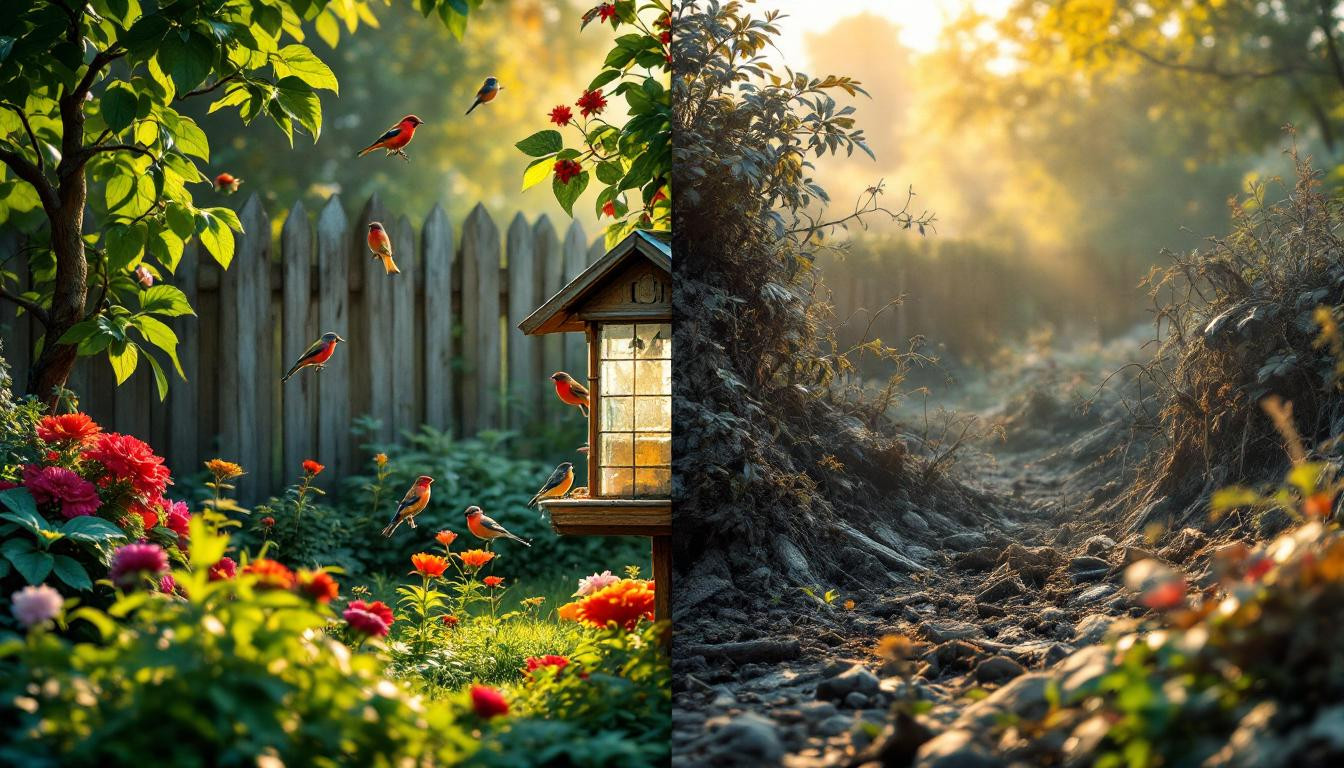That cheerful bird feeder hanging in your garden may not be the innocent wildlife attraction you believe it to be. Recent research has revealed that these popular backyard additions could be silently disrupting your garden’s delicate ecosystem in ways most homeowners never suspect. As supplemental feeding becomes increasingly common, scientists are raising alarm bells about the unintended consequences that extend far beyond your garden fence.
The hidden phosphorus problem transforming your soil
That handful of birdseed represents more than just breakfast for your feathered visitors. According to groundbreaking 2024 research, bird feeders introduce significant amounts of phosphorus pollution into local ecosystems – comparable to industrial waste outputs.
“Birds act as nutrient dispersers, but high feeding rates upset ecosystem balance, especially in phosphorus-sensitive areas,” explains Dr. Andrew Abraham of Aarhus University, whose team quantified feeder-derived phosphorus at levels rivaling sewage leaks.
Your feeder might be creating a disease hotspot
When birds congregate around feeders, they’re not just sharing seeds – they’re potentially sharing pathogens. Studies show feeders can increase disease exposure by 40–60% in high-density areas, turning your garden into an unintentional infection hub.
Diseases commonly spread at feeders include:
- Salmonella
- Avian pox
- Conjunctivitis
- Campylobacter
Why that “helpful” feeder might be an ecological trap
Like a deceptive oasis in a desert, feeders can create what ecologists call “evolutionary traps” – situations where animals are drawn to resources that ultimately reduce their fitness. Birds grow dependent on artificial food sources, altering migration patterns and reducing natural foraging behaviors critical for survival.
“Feeding birds in manicured lawns is ecologically ironic—we destroy habitats to offer artificial substitutes,” notes Sam Droege of the USGS.
Predators are watching your bird buffet
That neighborhood cat isn’t just casually strolling by. Feeders create predictable gathering spots, turning birds into easy targets. Studies reveal feeders increase bird-cat interactions by 3–5 times in suburban areas – essentially serving your garden birds on a silver platter.
The sustainable alternative your garden needs
Instead of feeders, consider planting native species that naturally support bird populations. Like an ecological symphony versus a single note, native plants create complex food webs rather than simplified feeding stations.
Benefits of switching to native plantings include:
- Balanced nutrition without excess phosphorus
- Reduced disease transmission risk
- Support for local pollinators and beneficial insects
- Natural pest control through bird foraging
Try incorporating purple flowers that naturally reduce garden pests while attracting birds. For healthier soil that supports your garden ecosystem, consider using cardboard as natural mulch.
If you must feed, follow these ecosystem-friendly practices
Like practicing traditional bread-making instead of relying on processed varieties, returning to more natural bird support requires intentionality. Clean feeders weekly with 10% bleach solution, limit feeding to winter months, and space feeders widely to reduce bird concentration.
Are your good intentions harming what you love?
The road to ecological disruption is paved with well-meaning bird feeders. By understanding the true impact of supplemental feeding, you can make choices that genuinely support the wildlife you cherish. Whether adjusting your garden practices or embracing native plantings, each mindful decision helps restore the natural balance your garden ecosystem craves.
